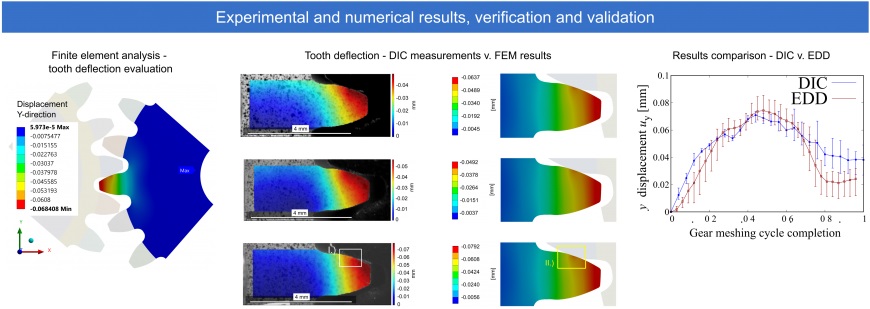In a new study, researchers from the Laboratory for Engineering Design (LECAD) and the Laboratory for Hydraulic Machines (LVTS) have demonstrated that, using a high-performance high-speed camera, it is possible to monitor the formation of bending tooth deflections of polymer gear teeth during operation. The results of the described research are published in the prestigious journal Materials & Design (IF=9.417) (link below).
Polymer gears are increasingly replacing metal gears in lightweight applications in a multitude of different industry segments such as e-mobility, home appliances, automotive, robotics, industrial automation, and many others. The successful use of polymers as gear materials requires an extremely good knowledge of their thermomechanical behavior and resistance to damage processes such as fatigue, wear, pitting and thermally induced inelastic deformations. The mentioned processes take place gradually during a greater number of gear running cycles and have their origin in the so-called gear meshing phase, i.e., during a short period when an given pair of gear teeth is in sliding-rolling contact. Understanding the meshing process, which in turn affects both the stress-strain conditions in the gear structure as well as the processes of friction and heat generation due to thermal losses, is critical to developing high-performance polymer gear drives that can withstand the set operating conditions and achieve the required service life.

Until now, the structural response of a gear during the meshing phase could only be analyzed using numerical simulation approaches, very often based on the finite element method. Although such simulations can be extremely useful, the mathematical models on which they are based are often limited by too narrow assumptions and simplifications. In the present study, an optical experimental analysis approach is proposed for the evaluation of the displacements and deformations of the polymer gear teeth (the material of interest was polyoxymethylene co-polymer, POM-C) during the meshing cycle based on high-speed camera recordings using a micro-optic lens. For this purpose, two methods were used to process the obtained images, namely the already known Digital Image Correlation (DIC) method and the newly developed Edge Displacement Detection (EDD) method. The first method, i.e., the DIC method, allows for a detailed analysis of bending displacements that occur over the entire domain of the lateral surface of the analyzed tooth and, in addition to the displacements themselves, also enables direct conversion into structural deformations (provided the speckle pattern and resolution used are fine enough). The second, the EDD method, focuses instead on the analysis of the tooth profile and, in addition to providing accurate measurements of the deflections of the tooth profile, it also enables the analysis of longer-term processes such as wear and accumulation of inelastic deformations – these will be further investigated as part of future research.

Link to the article: https://doi.org/10.1016/j.matdes.2022.111184